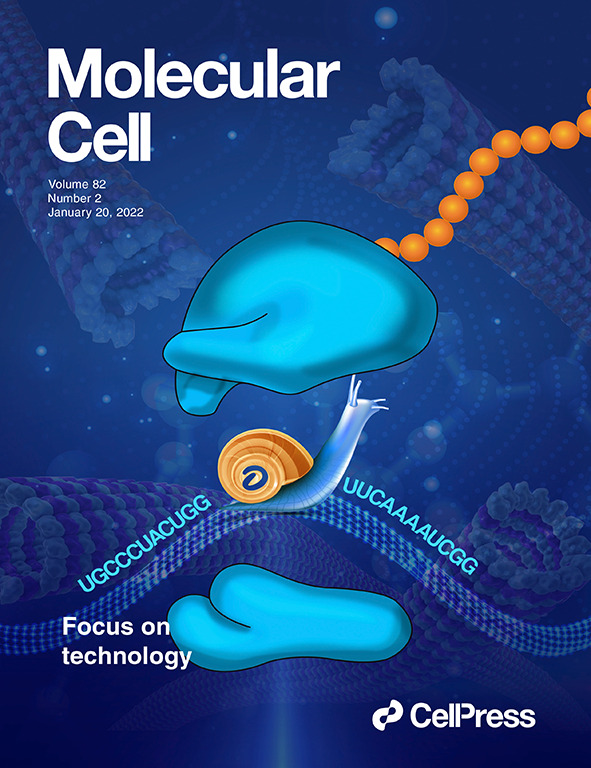TMEM175 plays a crucial role in osteoblast differentiation by regulating lysosomal function and autophagy
IF 3.7
3区 生物学
Q2 BIOCHEMISTRY & MOLECULAR BIOLOGY
引用次数: 0
Abstract
Bone provides structural support, enables movement, protects internal organs, regulates calcium and phosphorus levels, and contains bone marrow essential for hematopoiesis. Osteoblasts are specialized cells responsible for bone formation through the secretion of extracellular matrix components. Transmembrane protein 175 (TMEM175), which functions as an endosomal/lysosomal K+ channel and a lysosomal H+ channel, regulates lysosomal function and autophagy. Despite the recognized importance of lysosomes and autophagy in osteoblast differentiation, the specific role of TMEM175 in osteoblast differentiation has not been revealed. In this study, we investigated whether TMEM175 is associated with human bone mineral density and fracture and examined the role of TMEM175 in osteoblast differentiation. In analyses of single nucleotide polymorphisms of pore ion channel genes using the mouse2human database, a significant correlation between TMEM175 single nucleotide polymorphisms and human bone mineral density and fracture was identified. TMEM175 expression levels were found to increase during osteoblast differentiation from bone chip-derived mesenchymal stem cells (BMSCs). Knockdown of TMEM175 in BMSCs suppressed osteoblast differentiation, as evidenced by decreased matrix mineralization and lower expression levels of osteoblast marker genes. Further analysis indicated that TMEM175 deficiency leads to lysosomal dysfunction and partially impairs autophagic clearance during osteoblast differentiation. Moreover, the TMEM175 inhibitor 4-aminopyridine decreased osteoblast differentiation of BMSCs. Taken together, this study reveals that TMEM175 plays an important role in osteoblast differentiation by regulating lysosomal function and autophagic clearance.
TMEM175 通过调控溶酶体功能和自噬在成骨细胞分化过程中发挥关键作用
骨骼提供结构支撑、促进运动、保护内脏器官、调节钙磷水平,并含有造血所必需的骨髓。成骨细胞是负责通过分泌细胞外基质成分形成骨骼的特化细胞。跨膜蛋白 175(TMEM175)具有内体/溶酶体 K+ 通道和溶酶体 H+ 通道的功能,可调节溶酶体功能和自噬。尽管溶酶体和自噬在成骨细胞分化中的重要性已得到公认,但 TMEM175 在成骨细胞分化中的具体作用尚未揭示。在这项研究中,我们调查了 TMEM175 是否与人类骨矿密度(BMD)和骨折有关,并研究了 TMEM175 在成骨细胞分化中的作用。利用小鼠2人类数据库对孔隙离子通道基因的单核苷酸多态性(SNPs)进行分析,发现TMEM175 SNPs与人类骨密度和骨折之间存在显著相关性。研究发现,在骨芯片间充质干细胞(BMSCs)的成骨细胞分化过程中,TMEM175 的表达水平会升高。在 BMSCs 中敲除 TMEM175 会抑制成骨细胞分化,基质矿化减少和成骨细胞标记基因表达水平降低就是证明。进一步的分析表明,TMEM175的缺乏会导致溶酶体功能障碍,并部分影响成骨细胞分化过程中的自噬清除。此外,TMEM175抑制剂4-氨基吡啶(4-AP)会降低BMSCs的成骨细胞分化。综上所述,本研究揭示了TMEM175通过调节溶酶体功能和自噬清除在成骨细胞分化过程中发挥着重要作用。
本文章由计算机程序翻译,如有差异,请以英文原文为准。
求助全文
约1分钟内获得全文
求助全文
来源期刊

Molecules and Cells
生物-生化与分子生物学
CiteScore
6.60
自引率
10.50%
发文量
83
审稿时长
2.3 months
期刊介绍:
Molecules and Cells is an international on-line open-access journal devoted to the advancement and dissemination of fundamental knowledge in molecular and cellular biology. It was launched in 1990 and ISO abbreviation is "Mol. Cells". Reports on a broad range of topics of general interest to molecular and cell biologists are published. It is published on the last day of each month by the Korean Society for Molecular and Cellular Biology.
 求助内容:
求助内容: 应助结果提醒方式:
应助结果提醒方式:


